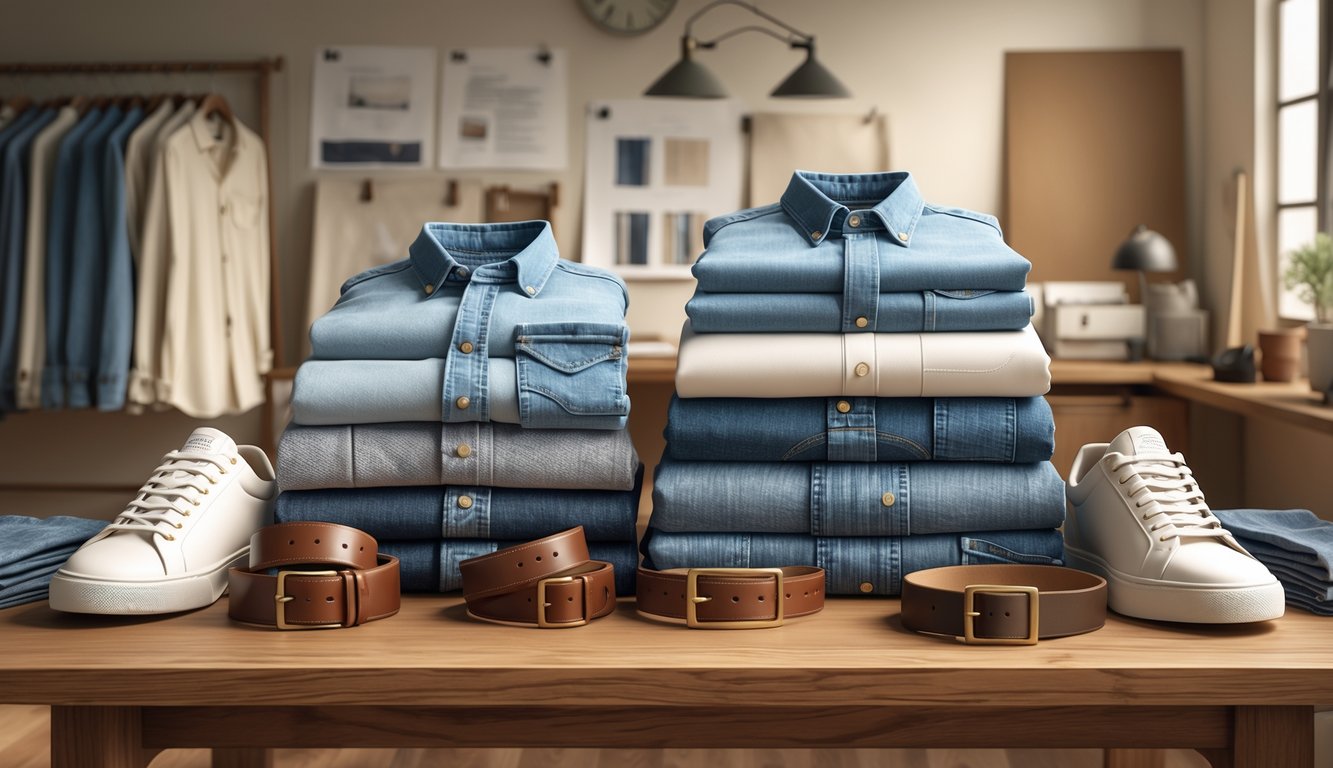
European Influence: Italian and Swedish Excellence
Third time I left my coffee somewhere this morning, but, priorities—what actually lasts longer, a cup of caffeine or a decent seam? We all know. True quality doesn’t scream; it’s just there, annoyingly unshowy. Italian precision, Swedish minimalism—everyone else tries to copy, usually with too much polyester and not enough sense.
Loro Piana’s Italian Craftsmanship
Let’s just skip the obvious—everyone loves cashmere, but Loro Piana makes it a whole other thing. They run their own Mongolian fiber sourcing (didn’t even know that was a thing until I googled it) and turn out storm-proof cashmere jackets that cost as much as a used car. Technical fabrics, six-step wool finishing, “The Gift of Kings” yarn (12 microns, which means nothing to me except it’s absurdly soft)—all of it just feels…extra. Stylists hoard these pieces, no joke.
I’ve never seen a Loro Piana coat with a bad seam. Backstage once, someone slipped on a Roadster coat and just said, “it fits, sits, and behaves.” That stuck with me. They keep everything in Italy, which is probably why Vogue UK calls them a fashion legacy. Compare their sweaters to a regular one—one falls apart, the other just…doesn’t. Nobody I know has ever regretted dropping the cash.
Toteme and the Swedish Label Approach
Toteme is the weirdest: Swedish, but not “Swedish” in the Ikea way. It’s all about being practical—less logos, more pockets. If you want a turtleneck with side splits or a shirt cut with surgical precision, Toteme’s got you. They make essentials—trench coats, tweed skirts—feel like a uniform for architects on a coffee break.
Their sustainability messaging isn’t perfect (whose is), but the “less but better” thing feels real. Scandinavia Standard says Swedish fashion is all about quality and longevity. My Toteme wool blazer? Still looks new every fall. No logos, just structure and fabric. It’s probably the only brand I bother recommending when someone asks about “quiet” luxury and I don’t want to sound pretentious.
American Classics: Enduring Labels

Honestly, nothing beats finding a brand that doesn’t self-destruct after two washes. My last black tee (not naming names) looked vintage after one spin cycle. Ralph Lauren, COS, Everlane—they’re my safety net. Capsule wardrobe, whatever, I just want stuff that survives.
Ralph Lauren’s Timeless Pieces
Polo shirts, cable knits, button-downs—I’m suddenly back in my high school debate team photo. But it’s not just nostalgia. I’ve got a Ralph Lauren oxford from 2010, and a tailor once told me, “That fabric doesn’t pill, ever.” Blazers too—one navy wool jacket, four years, still sharp under the worst lighting.
Editors love them for the fabric and details, not just the pony logo (though, yeah, you can spot it from a mile away). People think the quality’s gone mass-market, but if you stick to their timeless stuff—cable knits, Oxford shirts—you’re fine. Every closet needs anchors, right? At least, that’s what I keep telling myself.
Elevated Basics by Everlane and COS
Basics trap: how many black tees do you own? Everlane’s Pima micro-rib crew finally stopped me from buying backups. Their cashmere and organic cotton are heavier than the cheap stuff (higher GMS, apparently), which you only notice after a wash or two. They’re big on “transparent pricing,” but honestly, it’s the fact that my shirts last.
COS, on the other hand—Swedish again—those wide-leg trousers look expensive, drape perfectly, and don’t cost a fortune. Editors keep putting COS on quiet luxury lists: merino turtlenecks, poplin shirts, outerwear that doesn’t scream. Only gripe, some cuts are boxy, but if you want subtle, this is it. A stylist told me, “Just buy the COS shirt—no one will ask if it’s designer but they’ll notice the lines.” Not kidding, it actually happened.
Women-Led Modern Brands Redefining Quality

I’m done pretending not to care about seams or logos—what actually gets me is brands where you could wear the sweater inside out and still look put together. Suddenly, designers are squeezing actual utility out of fancy fabrics, and it’s rare.
Khaite’s Modern Luxury
Everyone who’s even remotely in the know drops Khaite for New York cool. Weirdly, barely anyone’s tried their Marfa boots. (If you have, congrats.) I own the Scarlet cardigan—yes, it’s hyped for dense cashmere, but after 53 wears, no pilling and somehow it’s fluffier? Not sure how that’s possible.
Harper’s Bazaar stuck Khaite on their best quiet luxury brands list for 2024. My tailor says, “they don’t over-finish seams—that’s confidence.” Consultants rave about the denim, not just another pair of jeans. The price is up there, but if you want investment pieces you won’t see at every brunch? Khaite’s it.
By Malene Birger and Tove
By Malene Birger—Copenhagen roots, but their viscose blazers are weirdly consistent. The brand always lands that “CEO who actually reads” vibe. Minimalism aside, their knit polos survive my travel disasters, and Modern Fellows says their stuff is “clean but not sterile”. I once got espresso and bleach on a Birger blouse and it’s still alive.
Tove—British, women-led, only since 2019. Their slip dresses are always lined, which sounds basic until you try one. My editor joked Tove stuff feels “like it was designed by someone who actually wears bras,” which, honestly, is all I need to know. Both brands skip logos, which, yeah, should be normal by now, but apparently isn’t.



